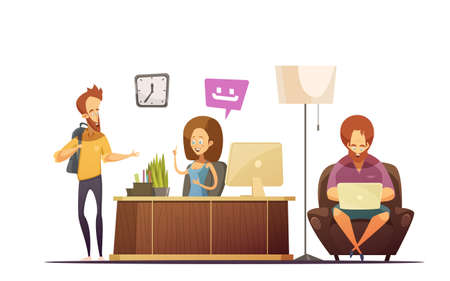1. Understanding the Impact of First Impressions
In the American job market, first impressions can be incredibly influential—often setting the tone for your entire interview experience. When you walk into an interview, your outfit is one of the very first things recruiters notice about you. Your choice of clothing communicates not only your professionalism but also your understanding of company culture and industry expectations. Dressing thoughtfully demonstrates respect for both yourself and your potential employer, signaling that you take the opportunity seriously. Recruiters often make quick judgments based on appearance, sometimes before a single word is spoken. By presenting yourself in attire that aligns with the company’s standards, you instantly boost your credibility and show that you’re prepared. Remember, in America’s competitive job landscape, those crucial first moments can tip the scales in your favor—and dressing well is a simple yet powerful way to start strong.
2. Decoding the American Dress Code
Understanding what to wear to an interview in the U.S. can feel overwhelming, especially since expectations can vary widely by industry and company culture. However, knowing the typical dress codes and how to interpret them will help you show up with confidence and make a great first impression. Below is a breakdown of common American interview dress codes, along with tips on how to identify what’s appropriate for your target role.
Business Formal vs. Business Casual: What’s the Difference?
| Dress Code | Description | Where It’s Common |
|---|---|---|
| Business Formal | Dark-colored suit (jacket & pants/skirt), dress shirt/blouse, conservative tie or accessories, closed-toe shoes. Professional grooming is essential. | Law firms, finance, high-level corporate roles, government positions. |
| Business Casual | Dress slacks/khakis or skirt, collared shirt or blouse, optional blazer/cardigan, clean shoes (can be loafers or flats). Less formal but still polished. | Tech companies, marketing agencies, education, healthcare administration. |
| Smart Casual | Nice jeans or chinos, neat top (no graphics), blazer optional. Appropriate for creative industries and some startups. | Startups, creative fields like design or media. |
How to Identify the Right Dress Code for Your Interview
- Research the Company: Check their website and social media for photos of employees. Notice what people are wearing in team pictures or at company events.
- Industry Norms: Corporate sectors tend toward business formal; tech and creative industries may expect business casual or smart casual.
- Ask if Unsure: It’s perfectly acceptable to ask your recruiter or HR contact about appropriate attire—this shows you care about fitting in.
Dressing One Step Up
A good rule of thumb is to dress one level more formal than the everyday office attire at your target company. This demonstrates respect for the opportunity and helps you stand out as a professional candidate.

3. Choosing the Right Outfit: Tips and Tricks
When it comes to nailing your interview in America, the right outfit can make all the difference in how you’re perceived—and how confident you feel. Start by researching the company’s culture and dress code. For traditional fields like finance or law, opt for a classic suit in neutral colors such as navy, black, or gray. If you’re interviewing at a creative or tech company, business casual attire—like tailored slacks and a neat blouse or button-down shirt—may be more appropriate. Whatever you choose, make sure your clothes fit well; ill-fitting outfits can be distracting and uncomfortable, which might undermine your confidence during the interview.
Comfort is key to projecting self-assurance. Select fabrics that breathe and move with you, so you won’t feel restricted or distracted during your conversation. Shoes should be clean, polished, and professional—closed-toe styles are generally safest for most industries. Don’t forget about grooming: neat hair, minimal cologne or perfume, and simple accessories help keep the focus on your skills and personality. Finally, try on your complete outfit a day before your interview to ensure everything looks sharp and feels comfortable—this small step can help prevent last-minute stress and let you walk into your interview with poise.
4. Attention to Detail: Grooming and Accessories
When it comes to making a great first impression at an American job interview, attention to personal grooming and accessories is just as important as the outfit you choose. U.S. employers often view cleanliness, neatness, and subtlety in appearance as signs of professionalism and respect for the workplace culture. Below are some practical guidelines to help you meet local expectations and boost your confidence:
Grooming Essentials
Proper grooming is fundamental. Hair should be clean, neatly styled, and away from your face. For men, facial hair should be well-trimmed or clean-shaven, depending on your style. For women, makeup should be natural-looking and not overpowering. Fingernails must be clean and trimmed—avoid bright or distracting nail colors.
Minimal Accessories Matter
In the U.S., less is more when it comes to accessories for interviews. Choose simple jewelry such as small earrings or a classic watch. Avoid anything flashy or noisy that could distract the interviewer. The goal is to let your personality and qualifications shine, not your accessories.
Hygiene Checklist
| Aspect | Best Practices |
|---|---|
| Hair | Clean, neatly styled, no extreme colors or styles |
| Face | No excessive makeup; facial hair groomed |
| Nails | Short, clean, neutral colors preferred |
| Scent | Avoid strong perfumes/colognes; opt for mild deodorant |
| Accessories | Minimal and professional; avoid large or flashy items |
| Clothing Condition | No stains, wrinkles, or pet hair; ensure everything is fresh and tidy |
Local Tips for Success
- Double-check your appearance before leaving home—lighting can reveal things you missed.
- If possible, carry breath mints (not gum) for last-minute freshness.
- Avoid eating foods with strong odors before your interview.
- Invest in a lint roller if you have pets at home.
Final Thought on Details
The small details—like freshly ironed clothes or subtle accessories—can make a significant difference in how confident you feel and how professional you appear in an American interview setting. By following these guidelines, youll demonstrate your attention to detail and show respect for the company’s culture.
5. Cultural Nuances and Personal Expression
While American interview culture emphasizes professionalism and a certain degree of formality, it also values individuality and diversity. If you wish to incorporate subtle personal or cultural elements into your interview attire, the key is balance and respect for workplace norms. For example, wearing a small piece of meaningful jewelry or an accessory that reflects your heritage—such as a scarf with traditional patterns or a lapel pin—can be a tasteful way to express your identity without drawing too much attention away from your overall appearance.
It’s important to research the company culture beforehand. Some workplaces are more open and inclusive, encouraging employees to celebrate their backgrounds, while others may lean toward conservative dress codes. When in doubt, opt for understated accents: neutral colors with a pop of color that represents your culture, or classic styles paired with a unique but subtle piece.
Remember, in the U.S., confidence comes from authenticity. Interviewers appreciate candidates who are true to themselves yet mindful of professional expectations. By thoughtfully blending personal touches into your attire, you signal self-assurance, cultural awareness, and adaptability—all qualities that make a lasting positive impression during your interview.
6. Virtual Interview Attire: Adapting to New Norms
As remote work and virtual interviews become a staple of the American job market, dressing for success now extends beyond just your wardrobe. Making a strong impression through the screen requires a blend of traditional professionalism and digital awareness. Here’s how you can adapt your attire and environment for video interviews to boost your confidence and present your best self.
Dress as If You’re Meeting in Person
Even though you’re interviewing from home, opt for business or smart casual attire that matches the company culture. A clean, well-fitted shirt or blouse in solid, neutral colors projects professionalism and avoids distracting patterns on camera. Don’t neglect your bottom half—wearing full professional attire helps you mentally prepare and avoids any embarrassing moments if you need to stand up unexpectedly.
Optimize Your Background
Your surroundings are part of your presentation. Choose a tidy, neutral background free from clutter or personal items. If possible, position yourself in front of a plain wall or use a simple virtual background if your platform allows. This keeps the focus on you and sends a message that you’re detail-oriented and prepared.
Master Lighting and Camera Angles
Good lighting is essential for looking polished on camera. Face a window or use a soft lamp to ensure even lighting across your face, avoiding harsh shadows or backlighting that can obscure your features. Place your camera at eye level so you appear engaged and confident—stack books under your laptop if needed to achieve the right angle.
On-Camera Best Practices
Avoid shiny jewelry or accessories that may catch the light and distract interviewers. Keep makeup subtle and hair neat, similar to what you’d wear in person. Silence notifications, close unnecessary tabs, and do a quick tech check before the call begins. Finally, maintain good posture, make eye contact by looking at the camera lens, and smile naturally to convey enthusiasm and confidence.
Dressing thoughtfully for virtual interviews shows respect for yourself and the opportunity while helping you feel more confident—ready to put your best foot forward in America’s evolving workplace.


